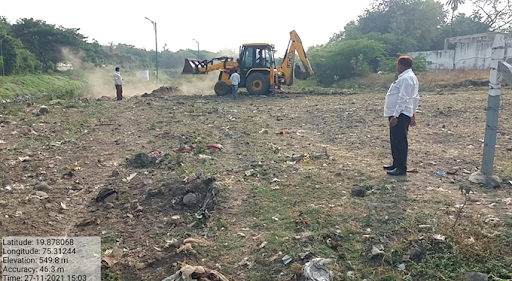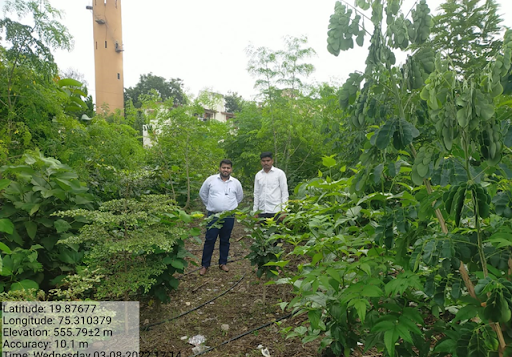Imagine a summer evening on the Hawaiian islands! A warm glow over the lush landscape, palm trees swaying in the soft breeze, and the air infused with the sweet scent of tropical flowers. The beaches come alive with the sound of waves breaking on the shore, creating a soothing melody. But havoc broke on Hawaiian islands on one such evening in the summer of 2023 – an unprecedented wildfire gripped the islands. The vibrant greenery was engulfed by rising fire waves, leaving locals and tourists in a state of disbelief. The year 2023 in the U.S. will be most remembered for the catastrophic, deadly wildfires in Maui, Hawaii, which killed at least 99 people, injured over 270 and destroyed hundreds of buildings.
The number of large wildfires doubled between 1984 and 2015 in the western US. In California alone, the annual area burned by wildfires increased by 500% between 1972 and 2018.
What’s causing this devastation
The Hawaiian wildfire was just one instance. Who can forget how Hurricane Katrina displaced more than one million people around the Gulf Coast. These are some of the consequences of global warming.
The effects of human-caused global warming are already happening and will continue to worsen as long as greenhouse gases are added to the atmosphere…
Global climate is changing at a fast pace – leading to global warming. Human emissions of heat-trapping greenhouse gases mainly drive this. Effects of this are evident – sea ice loss, accelerated sea level rise, glaciers and ice sheets shrinking and heat waves becoming more intense. This leads to natural calamities like droughts, wildfires, and extreme rainfall. The earth’s global temperature has risen by ~1°C, and it will continue to rise for many decades, mainly due to greenhouse gases produced by human activities. The World Bank estimates that climate change could displace more than 140 million people within their home countries in sub-Saharan Africa, South Asia, and Latin America by 2050
Greenhouse gas emissions will result in severe climate extremes and catastrophic damages across the planet. The extent of these consequences depends on the overall amount of carbon dioxide we release. However, by minimising such emissions, we can prevent some of the worst effects from occurring.
Climate mitigation action must be taken quickly to ensure a healthier present and future.
Battling climate change through afforestation
Planting trees is one of the most effective ways to reduce atmospheric carbon because it captures emissions and produces oxygen through photosynthesis. This process can aid in creating a new ecosystem by increasing soil quality, preventing erosion, creating new wildlife habitats, and protecting nearby areas from intense winds and floods.
At STL, we are committed to driving sustainable operations and making India a trailblazer in sustainability. While we strive continuously for widespread connectivity, there is a major concern for everyone. After the fourth industrial revolution, the world has been riding high on carbon emissions, impacting the environment. We cannot let the internet and technology tip the balance in favour of climate change. We have to build this connectivity in a way that supports environmental sustainability, reduces inequity and makes the world a better place. We also focus on developing system-wide approaches that will reduce our eco-footprint as well as render excellent economic returns in the long run. To do so, we have strengthened our focus on sustainability by committing to environment stewardship driven at the forefront by a goal to achieve Net Zero Emissions by 2030. We are always striving to contribute more to the environment to ensure we leave a healthier planet for the next generation.
Considering this, we have taken numerous initiatives to reduce our carbon footprint. In the last year itself, we have avoided 9,500+ tCO2 of carbon emissions from our manufacturing locations in India through robust energy efficiency measures. Further, we have also achieved a 13% reduction in our scope one emissions by using alternative fuels.
Afforestation is another such initiative that we are taking in Maharashtra for the communities. We entered into a unique public-private partnership with the Government of Maharashtra through the Village Social Transformation Foundation (VSTF), a special-purpose vehicle incorporated by the Chief Minister’s office for advancing the development process in rural parts of the state. One core component was improving afforestation coverage in the Aurangabad district. Under the mission, Gandheli village of Aurangabad has undergone a remarkable transformation due to dense forest plantations.
This is a story of how our afforestation drive in Maharashtra came together to combat heavy pollution, climate change and improve living conditions. The tree plantation at Gandheli highlights the significant success and positive impact of the Maharashtra Village Social Transformation Project.
A plantation drive that changes the picture of Village Gandheli
Gandheli faced environmental degradation, including industrial pollution, soil erosion and loss of biodiversity. These challenges adversely affected local ecosystems, water resources and agricultural productivity. We recognised the need for restoration and initiated the drive. VSTF and the village community came together to launch a massive tree plantation project. Village meetings were held to convey to the residents the importance of environmental conservation and the role of tree plantations in restoring the environment. The residents collectively decided on the tree species and developed an elaborate plan for implementation.
In June-July 2021, the project team collaborated with Aurangabad Municipal Corporation (AMC) and Cantonment Board Aurangabad for the identification of the tree plantation sites. STF-VSTF has jointly finalised to location for tree plantation activities in Aurangabad City with the technical assistance of the Social Forestry Department.

A detailed technical plan was being prepared to plant 50,000 trees at Cantonment Board and Kham River. The AMC and Cantonment Board also assured all possible support to ensure continuous water access points and water supply at the tree plantation site. The Gram Panchayat took responsibility for the constant care of the planted trees, watering, mulching and protecting the animals from grazing.
To date, we have planted ~290,000 trees on both communal and urban lands, transformed 55 acres of arid land into lush green cover, sustained over 188,000 plantations, and managed more than 200 species of flora and fauna as part of our restoration activities.

How this afforestation has affected climate change
Afforestation activities have brought significant benefits to the environment. Newly planted trees contributed to soil conservation, erosion control and increased fertility. They also acted as a natural barrier against wind and dust, improving air quality and reducing respiratory problems among residents. Growing vegetation stimulated groundwater recharge and increased local water availability.
Furthermore, the tree canopy provides shade, reduces the heat island effect and improves microclimate conditions.
Planted trees absorb carbon dioxide from the atmosphere through photosynthesis, reducing greenhouse gas emissions and fighting global warming.
Looking at the success of the tree plantation project, other neighbouring villages were also inspired, leading to a wider environmental restoration movement.
The tree plantation project at Gandheli is a vivid example of environmental regeneration. Through our collective efforts, we have mitigated climate change and improved the quality of life of residents. This success story is an inspiration for other communities.




